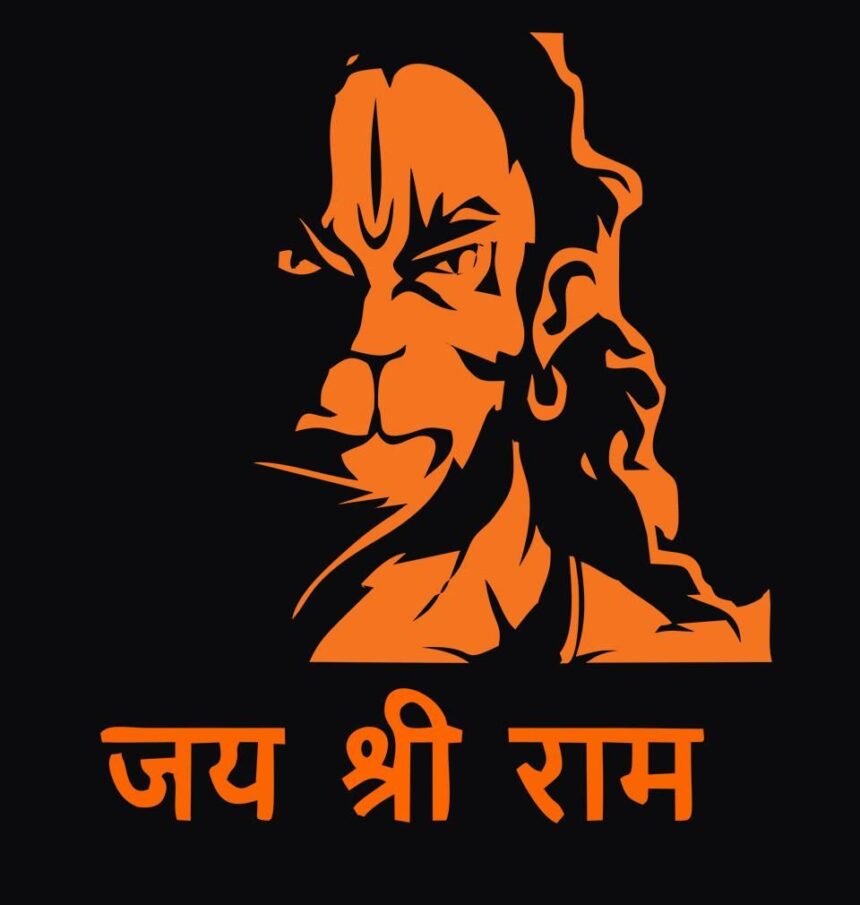Lord Hanuman: The Symbol of Devotion and Strength
Jai Shree Ram! Lord Hanuman, the revered monkey god, is one of the most significant deities in Hindu mythology. Known for his unparalleled devotion to Lord Rama, Hanuman’s tales of bravery, wisdom, and loyalty have inspired millions across generations. His stories are deeply rooted in the ancient Indian epic, the Ramayana, where he plays a pivotal role in the battle against the demon king Ravana.
Birth and Early Life
Hanuman, also known as Anjaneya, was born to Anjana, an apsara who was cursed to live on earth, and Kesari, a mighty vanara (monkey). However, his birth has a divine connection to Lord Shiva. It is believed that Hanuman is an incarnation of Shiva, born to assist Lord Rama in his divine mission. The wind god, Vayu, also played a significant role in Hanuman’s birth, leading to him being called the son of Vayu (Pavanputra).
From a young age, Hanuman exhibited extraordinary strength and intelligence. One of the most famous tales from his childhood is when he mistook the sun for a ripe fruit and leapt into the sky to grab it. Indra, the king of gods, struck him with a thunderbolt to prevent this, injuring him in the process. Vayu, angered by the injury to his son, withdrew air from the universe, causing a crisis among all living beings. To pacify Vayu and revive Hanuman, the gods granted him multiple boons, making him invincible and immensely powerful.
Hanuman’s Devotion to Lord Rama
The story of Hanuman is incomplete without his unwavering devotion to Lord Rama. His first meeting with Rama and Lakshmana was orchestrated by destiny when they were searching for Sita, who had been abducted by Ravana. Hanuman, disguised as a brahmin, approached the brothers and was instantly drawn to Rama’s divine aura. Recognizing Rama as his lord, Hanuman pledged his loyalty to him.
Hanuman’s devotion is most famously depicted in the episode where he crosses the ocean to reach Lanka in search of Sita. Despite facing numerous challenges, including encountering powerful demons and being captured by Ravana’s forces, Hanuman remained undeterred. He not only found Sita but also set Lanka ablaze with his tail as a warning to Ravana.
Hanuman’s Role in the Battle of Lanka
During the epic battle of Lanka, Hanuman played a crucial role in the defeat of Ravana. His strength, speed, and strategic acumen were unmatched on the battlefield. One of the most iconic moments was when Hanuman flew to the Himalayas to fetch the Sanjeevani herb to revive Lakshmana, who was fatally injured. Unable to identify the herb, Hanuman lifted the entire mountain and brought it back to the battlefield, saving Lakshmana’s life.
Hanuman’s heroics were not just limited to physical feats; his wisdom and counsel were invaluable to Lord Rama and his army. His ability to communicate with all beings, his deep understanding of dharma, and his unwavering faith in righteousness made him an indispensable ally.
Hanuman as a Symbol of Devotion and Strength
Lord Hanuman is revered not just for his physical strength but also for his virtues of humility, selflessness, and unwavering devotion. He is often depicted with folded hands, showing his eternal servitude to Lord Rama. Despite being blessed with immense power, Hanuman remained humble and dedicated his entire being to serving Rama.
His devotion is also symbolic of the ideal relationship between a devotee and the divine. Hanuman never sought anything for himself; his only desire was to serve his lord. This selfless devotion is why Hanuman is worshipped by millions as a symbol of bhakti (devotion).
Hanuman in Popular Culture and Temples
Lord Hanuman’s influence extends beyond religious texts; he is a cultural icon in India and beyond. His tales are recited in bhajans (devotional songs), and his image is often seen in temples, homes, and even vehicles as a protector against evil. Hanuman Chalisa, a 40-verse hymn dedicated to him, is chanted by devotees to seek his blessings and protection.
There are countless temples dedicated to Hanuman across India, with some of the most famous being the Hanuman Garhi in Ayodhya, the Jakhoo Temple in Shimla, and the Mahavir Mandir in Patna. Each of these temples has its own unique story and attracts thousands of devotees every year.
Hanuman’s Relevance in Modern Times
In today’s fast-paced world, Hanuman’s virtues of strength, loyalty, and devotion are relevant. His life teaches us that true strength lies in physical power, purity of heart, and unwavering faith. Hanuman’s humility, despite his immense capabilities, is a reminder that greatness comes from serving others and remaining grounded.
Devotees often turn to Hanuman in times of trouble, seeking his protection and guidance. His image, with a mace in one hand and his heart revealing the image of Rama and Sita, symbolizes the power of love and devotion in overcoming any obstacle.
Conclusion
Jai Shree Ram! Lord Hanuman, the embodiment of devotion, strength, and humility, continues to inspire millions across the world. His tales from the Ramayana and other scriptures are more than just stories; they are lessons in righteousness, devotion, and the power of faith. Whether it’s his unyielding loyalty to Lord Rama or his immense physical and mental strength, Hanuman remains a timeless figure, revered and worshipped by all.
As we chant Jai Shree Ram and seek his blessings, we are reminded of the eternal bond between the divine and the devotee, a bond that transcends time and space.







